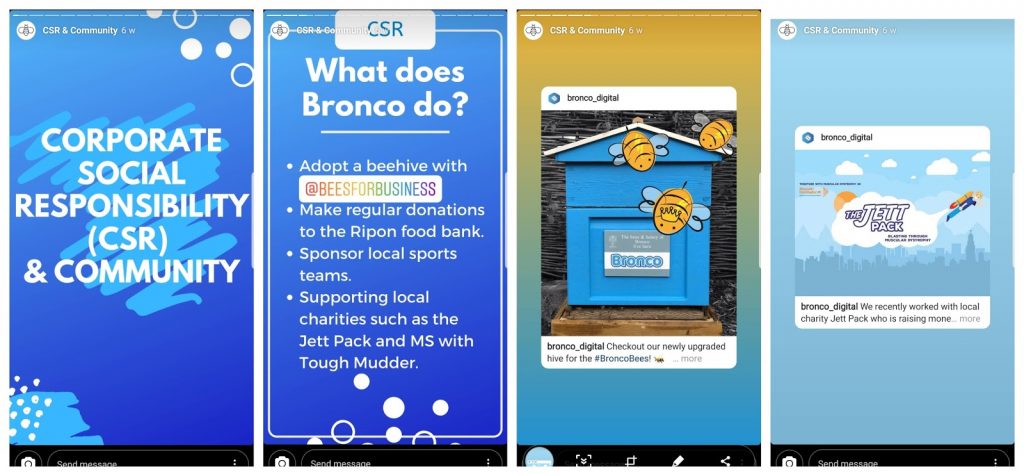10 Tips on Content Marketing for “Boring” Clients
We’ve all been there – the moment after all the celebration is over that you’ve won a new contract with a new client; the moment when you sit down to that first brainstorm and it hits you that the client’s industry isn’t, well, all that interesting, actually. All of a sudden, your dreams of coverage just flowing in begin to dry up.
Step number 1: stop thinking of clients and their industries as boring!
There are no boring clients, just boring ideas!
Even if the industry your client moves in doesn’t excite you, there are people out there who will find it not only interesting, but helpful. Do you really think everyone finds your fascination with cats quite so compelling? In the same way, there are people who are obsessed with oxygen canisters; there are fish food fanatics; there are electrical engineering enthusiasts.
So let’s dive straight in with some tips on how to bring it all back for these hard to market clients:
Reframe it
Why do you think the client is boring? Is it because their blog is full of stale and stereotypical content for their industry? Is their niche oversaturated? Is it because you simply don’t know enough about the industry?
All of the above simply give you the opportunity and the challenge to get the inspiration flowing with fresh and zingy new ideas!
Take a step back, take another look at the client, then start thinking outside the box:
If it’s helpful, it’s not boring!
This industry and the client exists for a reason: to give a solution to a problem. There would be no business in it otherwise! This, therefore, means that they’re helpful. Simply ask yourself a few questions:
- Why does this industry exist?
- Who uses this product/service?
- Why is it important to them?
It just takes a leap of faith and a bit of research to put yourself into the shoes of someone who has an interest in that industry and find out what they really need. Then answer those questions for them.
But the real crux of this is how to make your content really stand out from the stale ideas that everyone else is pushing in that industry…
Check out the competitors
The first thing to do with any new client you bring on, or any new vertical you’re about to enter, is to research your competitors. Many people use this as a way of digging out content that has worked for them so that they can redo it, but better. But we recommend doing your research on competitors to find out what hasn’t worked for them too. If they’re churning out masses of overdone content but getting nowhere, that simply isn’t going to work for you either. Instead, use what they’re doing as inspiration.
Keep an eye on the inspiration
Instead of wishing you had the same successes as your competitors and moping around about it, instead check out their work regularly. Figure what types of content are getting the most attention in their industry, what audiences they’re targeting, when they’re pushing out content, and most crucially, why they’re doing all the above. If they’re successful, you can replicate their methods with your own brand voice and identity to create something unique.
Find the story and the angles
There’s a reason why the John Lewis adverts are such a big hit every year. And there’s a reason why we spend our spare time watching films or box sets and reading books. People will always connect with storytelling.
And every business worth their salt has a story, whether they know it or not.
Consider it this way, Peter Willis was named the “most boring man in Britain” due to his unusual hobby of photographing postboxes. This isn’t thought of as something particularly useful or fun to do in your spare time, but it’s something he enjoys. Nevertheless, the BBC have written about him, as have the Daily Mail, the Mirror, Euronews and more.
Here are some questions you can ask to find out what’s interesting behind the brand:
- How did they get their name?
- How did they launch?
- What is unique about their products?
- Why did they choose to go into the industry?
- What solution are they providing?
Then weave that brand story!
You can also integrate parts of the business that are “behind the scenes” – share your wins and your “real” news; talk about how you’ve won a new contract or you’ve fundraised for a charity; tell people about how your family business got started or how your team has lately got together for a work night out. These make excellent posts on social media that all give your company a personality that sets you apart from others in the industry. For example, we’ve recently shared a series of Instagram Stories on our own Bronco page all about the CSR work we do which gives an insight into life at Bronco HQ, not only making a difference for the community, but letting people see the personalities behind the names working on their accounts:
But there’s one thing that’s key before you start sharing all these messages:
Research your customers
If you work in a serious medical industry, your customers probably don’t want to see a constant flow of your office cat videos on your social media; and if you run a funeral home, people won’t be all that impressed with pictures of boozy nights out. While these types of content can work brilliantly to spice up a “boring” social feed in some industries, use both research into your customer base and your head to decide what’s right to share with them. Find out the basics like how old they are and where they’re from, but also investigate what their interests are and what they engage best with.
Embrace new content formats
Guides are always going to be popular in every industry – whether that’s a video, a bullet pointed list, a piece of in depth long form content or an image based infographic – but these are often overdone. If you can think outside the box, get more visual and interactive with your content, you’re going to pull in a broader audience. Study what works in your industry and try out different ideas for yourself: case studies, infographics, interviews, data led surveys, videos, podcasts – the list is endless, but it’s all about finding out what works for your niche and drawing from that.
But as we said earlier, while interesting content formats like interactive maps and parallax scrolling web pages are shiny and exciting, don’t just let your content strategy rely on format; the real winning content relies on storytelling of the best kind. If there’s no story, there’s nothing to market.
Here are a few examples of excellent campaigns run for traditionally “boring” or hard to market clients that achieved results demonstrating just how broad the opportunities can be for content marketing – some for our own clients, some by other agencies; some “shiny” and exciting, some simply well-informed and well-researched:
- Bronco for Schofields Insurance – simple survey on Instagrammability that went viral for a holiday home insurance company
- Rise at Seven for CE Safety – a data led piece
- Bronco for Smart Cells – a campaign based around an awareness day for a cord blood storage company
- Edit for Guestline – a B2B company specialising in property management systems
- Bronco for Oeco Garden Rooms – graphic based campaign
- Audit Lab for YES Glazing – expert comment
- Paul Sullivan at Bias Digital for City Hypnosis – blog content strategy
- Mark Rofe for…Mark Rofe – shiny PR stunt & a cheeky inclusion, but if you know the digital world right now, it had to be done!
It’s also always worth giving your client a push to see if they’re happy to trust you to take it outside their comfort zone. Big PR stunts can make huge headlines around the world, but these are often risk-takers for many clients. If you can prove that you’ll get results from it, ask your client to let you take the reins and give it your all.
Stay away from the standard guest post
For how many years has it been said that the guest post is long gone and dead? Yet commercial guest posts still continue to be churned out with obvious spun content and paid links “hidden” among “useful” content. While this tactic may have worked back in 2010, we’re in a new decade now and it doesn’t make life fun for you or your client, nor does it give you the kind of results you’re looking for!
Content in 2020 needs to be inspiring, not the same content that everyone else has already done rewritten fifty times.
Instead: Use the guest post in a way that works for you
The last point isn’t to say that guest posts are to be avoided entirely though. If your client has an expert on board in their industry, their words will be far more valuable than the fluff any old content writer can put together. Find a place where their expertise might be needed and offer up some content from them.
Remember that just because a topic is seemingly intrinsically “boring”, it doesn’t have to be. Present it in a way that captures interest and you might just win over a sector of people you never thought you would.
For example, would you say you find metaphysics interesting? If your answer to that is no, answer me another question – have you heard of Brian Cox? The “man who made science sexy” won over people with his enthusiasm for a topic that is traditionally thought of as nerdy. So much so that examiners saw a 19.6% increase in people studying A level physics, a 40% increase in maths and a 19.4% increase in chemistry over the 5 years that his science became mainstream.
If the client has someone with a passion and genuine interest in their industry, that enthusiasm is contagious and will carry over, so use it wisely.
Or alternatively, use the guest post from another angle. If your client’s niche has influencers who are willing to invest a bit of time, get them to guest post or contribute ideas for your content too. Not only does this allow them a bit of self-promotion too, but you also get content from another perspective.
Broaden your horizons
Don’t just stick to the narrow niche that your client sits in; research the industry and find out what branches off from it. Not all content needs to be big and shiny to make it work, but it doesn’t necessarily have to be related absolutely directly to what your client does. Just remember to be sensible with this though; no one coming to a website for a fish food wants to read about fly fishing, and journalists receiving content that’s only vaguely related to the brand it’s coming from will find this confusing enough not to bother featuring it.
Finally: remember your goals
When you’re creating a piece of content for a client, always always make sure that you know both their goals and your goals for the end result. Not only is every industry different – for example, a young fashion brand might value social shares far more than links in the press – but each client is different too – some might want to go home at the end of the day and show off what they’ve achieved to their friends and family, others might simply want to rank higher in Google to get more conversions that way.
You need to have these conversations before you even start researching a campaign for your client. If you come up with a fabulous idea that will draw in the links, then bring it to fruition only to find that your client really wanted to increase their Instagram following and engagement with this project, you’re going to struggle. The same piece of content will very rarely bring in both links and social engagement organically. There are tweaks that can be done to make it work, but the solution will always be making sure you’re on the same page at the beginning so that you can get the most out of your content creation.
Have you got any tips when working with “boring” or difficult to market clients?
If you’re struggling to market your business because it’s a typically “boring” niche, get in touch with us to find out what we can do to help!
Share this article
Like what you’ve read, then why not tell others about it... they might enjoy it too
We'd love to hear from you!
If you think Bronco has the skills to take your business forward then what are you waiting for?
Get in Touch Today!






Discussion